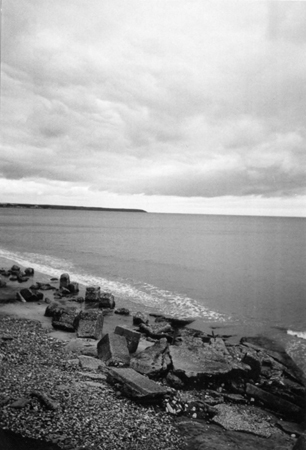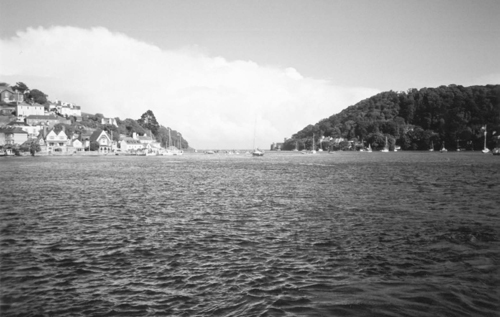Under the Bloody Flag (32 page)
Read Under the Bloody Flag Online
Authors: John C Appleby

Gilbert’s backers were made up of gentlemen, especially from the south-west, including members of his own family, and London merchants, such as Thomas Smith who had wide-ranging interests in overseas commerce. Although Gilbert enjoyed the patronage of Walsingham, there were few high-ranking courtiers or officials among his supporters, with the exception of the Earl of Sussex. With such support Gilbert assembled a large expedition of ten vessels and 500 men. Among the captains were Gilbert’s younger half-brother, Walter Ralegh, and Henry Knollys, who contributed three of his own ships to the expedition.
Gilbert’s venture was based on an uneasy association of potentially competitive interests. Soon after reaching the coast of Ireland, Knollys’ ships effectively abandoned the expedition in favour of piracy and plunder. Gilbert made some attempt to proceed across the Atlantic, but he was forced back by bad weather. It was an embarrassing, though revealing failure, particularly for the small and rather isolated group of promoters for American colonization. Spanish suspicions of Gilbert’s schemes appeared to be confirmed when several ships from the expedition plundered the coast of Galicia, raiding cattle and pillaging a shrine, which was followed by the spoil of French vessels.
14
There can be little doubt that Callice and his associates were heavily implicated in this opportunistic resort to piracy. An inquiry of 1579 failed to investigate the matter effectively, however, leaving him free to continue his irregular roving at sea. According to a report of June 1580 he was ambushed and taken prisoner on one of the Orkney Islands, after landing to take on fresh water. Several years later, during 1583 and 1584, he provoked renewed complaints about the spoil of French shipping. By this time he was associated with Court Hellebourg, who was based on the Isle of Wight, and sailing with a commission issued by Don Antonio, the pretender to the throne of Portugal. Under such dubious authority, on the eve of the war with Spain, in March 1585, he was involved in attacks on Iberian shipping with William and Edward Fenner.
15
The activities of Callice and others during the later 1570s demonstrated that small-scale, organized piracy had become a deep-seated problem. As in the past, it easily spread across the Irish Sea, threatening to become entangled with native resistance towards the Elizabethan regime in remote regions of Ireland. At the same time it was complicated by an upsurge in Scottish depredation, which also ranged across the Irish Sea. Although such activity depended on local support, in some areas it provoked confusing allegations and counter-allegations concerning the conduct of officials or the connivance of members of communities. Such claims raised difficult questions about the enforcement of law and order. At times they suggested also that the regime was in danger of losing control over those parts of the coast where pirates were able to operate with immunity from the threat of arrest.
A wide range of reports and complaints reveals the extent and nature of piratical activity, as well as the demands it placed on the regime. The south-west remained a fertile breeding ground and reception area for pirates and rovers. It attracted some of the most notorious pirates operating during these years, including Robert Hicks, who came from Saltash, John Piers of Padstow, and Callice. Pirates of varied backgrounds were able to congregate in favoured locations such as Tor Bay, Purbeck, Portland or the Isle of Wight, where loose bonds of community were renewed at informal social gatherings, on land and at sea, providing an opportunity for the exchange of news and gossip, the disposal of plunder and the tending of the sick or wounded. In secure locations ashore pirates indulged in prolonged drinking sessions, though entertainment and recreation could be diverse. Simon Fernandes, an associate of Callice, later boasted of his skill in horse riding, ‘a thing that few mariners can wel doe’, which he acquired ‘on a great horse at Sir William Morgayns, … when he … bremyd hym [the horse] with a cudgel abowt the beak head afore and the quarters abaft’.
16
As Callice’s narrative indicated, moreover, such gatherings enabled pirate leaders to maintain contact with French rovers. Despite the disapproval of the regime, French men-of-war continued to visit the coastal waters of England and Ireland. During October 1577 Sir Arthur Champernowne, the Vice Admiral of Devon, arrested fifteen French warships off Plymouth.
17

Padstow Bay, Cornwall. This small Cornish port was the home of John Piers, a notorious pirate who sailed in local waters, haunting Lundy Island, to prey on trade and shipping. He was aided by other members of his family, including his mother, who was reputed to be a witch. (Author’s collection)
But small-scale, localized depredation was not confined to south-west England. In south Wales there were several pirate captains operating in the shadow of Callice. They included Edward Herbert who, like Callice and Hicks, was able to dispose of plundered commodities in Cardiff and Milford Haven. In May the Cinque Ports were so troubled with pirates that the Lord Warden, Cobham, appealed to the council to send out ships against them. At the same time pirate groups ranged along the east coast. In July 1577 the
Fortune
of Aberdeen was taken off Lowestoft by Captain Phipson; one member of the pirate’s company was apprehended in Yarmouth while trying to hire new recruits. Acting in consort with Captain White, Phipson spoiled fourteen Dutch vessels of linen, cheese and other goods. Both pirates resorted to a safe haven along the coast of Yorkshire, near the mouth of the River Humber, where they were able to land and receive assistance from local people. Across the river, in Lincolnshire, pirates frequented small creeks and havens to dispose of plunder. During August 1577 Lancelott Grenewell, captain of the
Elizabeth
of Chichester, brought a ship laden with rye into Englemans haven which was also known as ‘Theefes creeke’.
18
Subsequently, Grenewell was captured by several armed vessels sent out by the mayor and corporation of Hull. Further south, complaints that pirates were haunting the mouth of the Thames compelled the Queen to send out two of her ships to apprehend them.
The activities of Callice indicated the continued importance of Ireland for much of this piracy and spoil. The presence of English and Welsh pirates in Irish waters may have been with the encouragement of Gaelic leaders, such as O’Sullivan Beare, who identified them as potential rebels against the regime. In these ambiguous circumstances Callice and others were welcomed in remote regions of south-west Munster, including Bearhaven and Dingle, though an alliance between the pirates and Irish rebels failed to materialize. Most pirates seem to have retained an underlying, if self-interested, loyalty to the Queen. Hicks was captured in Ireland, and thereafter employed in service against a Scottish pirate until he was despatched to London by Sir William Drury, the president of Munster. In any case Irish reactions to English and Welsh piracy were tempered by the spoil of local shipping. During 1579 Drury complained to the council of a piratical attack on two Breton ships, and the spoil of a merchant of Drogheda, by Alexander Vailes of Aldeburgh. To some extent, moreover, piracy in Irish waters was influenced by the activities of the rebel, James Fitzmaurice, who possessed a French or Spanish commission for the plunder of English and Huguenot vessels. Reports that Fitzmaurice seized an English ship, the company of which were ‘sent to the Inquisition and executed’, may have provoked hostility from patriotic pirate captains, encouraging them to provide officials with intelligence regarding his preparations for a landing in Munster.
19
Most of these pirates continued to operate in an opportunistic and indiscriminate manner, at least in their plunder of foreign shipping. The result was a mixed haul of booty from vulnerable trading and fishing vessels, much of which was readily disposed ashore, for modest returns, often in the form of provisions, hospitality and occasionally credit. It may have been possible for some pirate captains to accumulate wealth, but this depended on resourcefulness as well as luck, and a willingness to venture to the coasts of Spain and Portugal in search of richer prizes. Hicks, for example, returned from a voyage to the coast of Galicia, during 1577, with a Spanish ship laden with iron and other goods.
20
In the waters around the British Isles, where too many rovers may have been in search of potential prey, pirate groups operated in highly contingent circumstances, appearing at times almost as seaborne vagrants. Phipson’s activities along the east coast suggest that piracy might have been part of a wider creative, sometimes criminal – though not always successful – response among the labouring poor to hard times. According to the report of the local deputies to the recently appointed commissioners for piracy in Yorkshire, he was cruising off the coast as early as 1574, when he arrived in Scarborough in a small boat of 5 or 6 tons, with a company of about twenty men, to await the arrival of a larger vessel from Ireland. The boat was carrying several rolls of linen cloth which aroused the suspicions of the town bailiffs. Consequently, Phipson was arrested and sent to appear before the lord president of the Council in the North at York. Within a week he was back in Scarborough, although sickness apparently prevented him from putting to sea with the rest of his company for a brief foray along the coast. Shortly thereafter the pirates returned, bruised and beaten, after sailing to Flamborough Head, ‘where they enterprised upon a Frenche ship & were repulsed’.
21
Nonetheless, they acquired an anchor and a piece of cable which were brought ashore and stored in a cellar in Scarborough. Although Phipson’s men were arrested and sent to York, they were not detained.
During 1576 the pirates returned to the region, arriving at Filey in a small vessel armed for war. On this occasion the local deputies reported that Reynold Farley and his wife went aboard the ship and purchased barrels of soap, pewter ware and other goods. A few days later, two other rovers came into Filey, including one of Phipson’s associates, Captain White, who ‘dranke & made merry in dyvers houses in the towne’.
22
Phipson came back after several weeks, in search of victuals, purchasing beer and bread from two local men. The following year Phipson and his company were further north along the Yorkshire coast, seeking supplies of fresh water in the small haven of Skinningrove. Faced with local obduracy the pirates threatened to use force, but an attempt to land was repulsed. In response they seized a boat belonging to Robert Patteson, described as a very poor man; it was returned after he supplied Phipson and his company with water. By 1577 Phipson’s activities along the east coast had come to the attention of the council. In February 1578 it was dealing with the complaint of a Scottish trader, who stated that the pirate had plundered sheep skins and other goods which were sold to a beer brewer in Ipswich.
23

Filey Brigg and Bay, Yorkshire. This exposed bay was regularly visited by pirates during the 1560s and 1570s. In December 1577 the piracy commissioners for Yorkshire reported the recent arrival of Captain Phipson, who sold barrels of soap and pewter ware to the local inhabitants. (Author’s collection)

